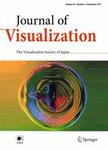版权所有:内蒙古大学图书馆 技术提供:维普资讯• 智图
内蒙古自治区呼和浩特市赛罕区大学西街235号 邮编: 010021

作者机构:Hankuk Aviat Univ Dept Aeronaut Sci & Flight Operat Goyang 412791 Kyeonggi South Korea Korea Air Force Acad Dept Aerosp Engn Chungwon 363849 Chungbuk South Korea
出 版 物:《JOURNAL OF VISUALIZATION》 (显形杂志)
年 卷 期:2006年第9卷第4期
页 面:381-391页
核心收录:
学科分类:1002[医学-临床医学] 07[理学] 0812[工学-计算机科学与技术(可授工学、理学学位)] 0702[理学-物理学]
主 题:fling-clap motion first cycle Navier-Stokes equation insect flight numerical visualization separation vortex
摘 要:A flow visualization of the two-dimensional rigid fling-clap motions of the flat-plate wing is performed to get the knowledge of fling-clapping mechanism that might be employed by insects during flight. In this numerical visualization, the time-dependent Navier-Stokes equations are solved for two types of wing motion; fling followed by clap and pause motion and,cyclic fling-clapping motion . The result is observed regarding the main flow features such as the sequential development of the two families of separation vortex pairs and their movement. For the fling followed by clap and pause motion , a strong separation vortex pair of counterrotation develops in the opening between the wings in the fling phase and they then move out from the opening in the following clap phase. For the cyclic fling-clapping motion , the separation vortex pair developed in the outside space in the clap phase move into the opening in the following fling phase. The separation vortex pair in the opening developed in the fling phase of the cyclic motion is observed to be stronger than those of the fling followed by clap and pause motion . Regarding the strong fling separation vortex and the weak clap separation vortex above it in the opening, the flow pattern of the fling phase of the cyclic fling and clap motion is different to that of the fling phase of the first cycle. The flow pattern of the third cycle of the cyclic fling-clapping motion is observed to be almost same as that of the second cycle. Therefore, a periodicity of the flow pattern is established after the second cycle.